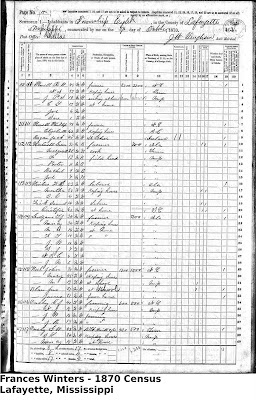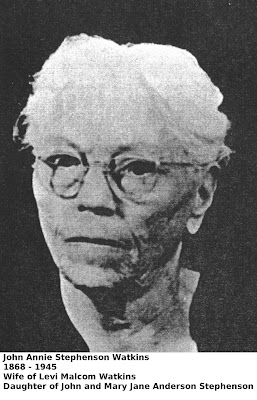

The following article is taken from the 30 March 2009 Eastman's EOGN:
"BookDrive Pro - A Cradle Scanner
I want one of these!
I want one of these!
This week, ATIZ of Los Angeles introduced a brand-new cradle scanner, called the BookDrive Pro. It is designed to scan books, maps, newspapers, and other documents without inducing any page curl and with minimal handling of the documents. The result is sharper images and little or no damage to delicate documents being scanned.
I haven't had a chance to get my hands on a BookDrive Pro just yet. After all, they were only announced this week. However, I did talk today with Nick Warnock at ATIZ. He patiently answered my questions and offered additional information about his company's new scanner.
If you have ever tried to scan a bound book by using a normal flatbed scanner, you are probably already familiar with page curl. If you turn a book upside down and place it on a normal flatbed scanner, such as any of the scanners for sale at your local computer store, you will note that the outer two-thirds of each page will scan well. However, as you get closer and closer to the bound edge of a page, the image is degraded. The binding prevents the entire page from being placed flat on the scanning surface. The result is referred to as "page curl." The image is not very useful, and using OCR software to decode the words on the page will probably be impossible.
See the images in this article for examples.
A "cradle scanner" is one that places the book or other document(s) to be scanned in a V-shaped cradle. In this case, the cradle is in the bottom of the scanning device. Cameras are mounted overhead and take pictures of the pages to be digitized. The advantage of a cradle scanner is that the pages are flat and always perpendicular to the camera, resulting in a better picture.
The BookDrive Pro includes two pieces of non-glare glass mounted in a V-shape that are placed on top of the pages being scanned to make sure they are held completely flat and perpendicular to the cameras. The combination of V-shaped book cradle and V-shaped glass holds the book open at a non-stressful, 120-degree angle for scanning by high-resolution digital SLR cameras.
I have written before about some high-end and expensive cradle scanners that include automatic page turners. These units typically sell for $120,000 and up. The BookDrive Pro does not use automated page turners; a human must flip each page manually as the images are being made. Nick Warnock reports that the BookDrive Pro does not damage the pages in the manner of some of the automated page turners. If you have a delicate and rare book, would you want an automated robot turning the pages for you, or would you prefer a trained human to do the work? Nick pointed out that this is especially important when the pages are stiff or brittle and may not turn easily when using a robotic device.
In fact, the robotic page turners cannot operate in a truly unattended fashion. A human operator must always be nearby to handle jams or any situations in which the pages do not turn smoothly.
The BookDrive Pro can provide loving care for the book being scanned, assuming the human operator is properly trained. (Training requires only a few minutes' time.)
The BookDrive Pro has much less mechanical complexity than the automated page turning book scanners, so prices are much lower. The BookDrive Pro also uses standard, off-the shelf digital cameras for creating the images. The scanner can be ordered without cameras if you wish to provide your own. However, the more popular option is when ATIZ includes two Canon EOS XTi cameras in the order. Nick pointed out that for very high-resolution work, such as scanning maps, the user might want to substitute higher-resolution cameras. In fact, cameras up to $40,000 are available from Canon and other manufacturers, but it is doubtful if anyone will need cameras at that price range when scanning books and newspapers. Cameras in the $400 to $600 price range will work well for most applications. The scanner does use two cameras at once: one for digitizing the left-hand page and another for digitizing the page to the right.
The BookDrive Pro includes BookDrive Capture software, an application that controls the cameras. It supports a wide range of Canon EOS SLRs cameras and lets you configure camera settings directly within the software. Press one button and the cameras will shoot left and right pages and render them on-screen immediately. You will have a true left page and a true right page, just like the originals.
The scanner also includes BookDrive Editor Pro software for post-scan image processing. It goes hand in hand with BookDrive Capture and can also be used with other scanners. BookDrive Editor Pro helps produce images of the highest quality, ready for distribution. The image enhancement tools and the intuitive user interface are used together to deliver professional results with minimal fuss.
The BookDrive Pro does require TWO computers for Dual PC mode, capturing left and right images simultaneously. These must be Windows systems running either Vista (32 bit system) or Windows XP. Sixty-four bit systems are not supported. Each computer also must have a one-gigahertz or faster processor, at least one gigabyte of memory, at least 10 gigabytes of available disk space, and a monitor with at least 1024 x 768 pixels. In other words, most any Windows computer sold today will suffice. Such computers are available for $500 and up. The scanner and software will also accommodate any of a long list of Canon cameras. Since cameras do not have standard interfaces, the software does not support other brands of cameras.
The price of the BookDrive Pro is too high for most private individuals: $12,595 without cameras. ATIZ also sells a bundle consisting of the BookDrive Pro scanner and two Canon EOS XTi cameras and two matching lenses for $14,995. I cannot imagine a genealogist purchasing one of these for use at home, but I am sure it will be very popular for libraries, archives, public records offices, and perhaps even genealogy societies that have significant libraries.
The BookDrive Pro certainly is much cheaper than a $120,000+ automated page-turning scanner. In fact, anyone can purchase eight BookDrive Pro scanners for the price of one robotic scanner.
I'd love to use one of these for a few weeks in any major genealogy library. Can you image scanning all the out-of-copyright books in the place?
For more information about the BookDrive Pro, look at http://www.atiz.com.
To see a short video showing the BookDrive Pro in operation, visit http://vimeo.com/2916589 "




